How to start Brazilian Jiu Jitsu (BJJ)
This Beginner's Guide to Jiujitsu introduces Brazilian Jiujitsu (BJJ), covering its basics, who might enjoy it, how to get started, and essential etiquette. Ideal for newcomers, it provides the foundation to begin your jiujitsu journey confidently.
Beginner’s Guide to Jiujitsu
Welcome to Brazilian Jiujitsu! This page is your one-stop beginner’s guide to starting your jiujitsu journey. Good luck and be kind!
What is BJJ?
Brazilian Jiujitsu (BJJ) is a martial art descended from judo. Key characteristics include:
- Contact: Competing for dominance against another person.
- Bare-Handed: No weapons involved.
- Grappling-Based: Focus on manipulating your opponent’s body rather than punching or kicking.
- Submission-Based: The goal is to make your opponent surrender through chokes or joint locks.
BJJ emphasizes ground grappling, unlike judo, which focuses more on throws and takedowns.
Would I Like Jiujitsu?
You might enjoy jiujitsu if you:
- Want a good workout without traditional exercises like running or lifting.
- Seek a vibrant community.
- Desire a sense of progress and purpose.
- Enjoy activities combining physical and cerebral techniques, similar to rock climbing.
- Have experience in other combat sports.
- Are open to trying something new.
Is Jiujitsu for Me?
Anyone can do jiujitsu, regardless of age, size, gender, background, or experience level. All you need to do is show up.
It’s okay if jiujitsu isn’t your cup of tea. The goal is to be the best you can be, not to be better than others.
How to Try Jiujitsu
- Find a Gym: Use Google Maps or Yelp to search for jiujitsu gyms with good reviews.
- Check Class Info: Look at the gym’s website or call for class schedules, policies, and prices.
- Prepare: Wear comfortable athletic clothes, remove jewelry, and bring water. No need to buy gear yet.
- Show Up: Tell them you’re new and want to try a class, which is usually free. They may lend you a gi.
- Participate: Warmups, teaching, drilling, and possibly sparring. Take it slow and ask questions.
- Decide: Determine if you like jiujitsu and the gym. Try another class if needed.
Committing to a Gym
When choosing a gym, consider:
- Vibe: Friendly, welcoming, and clean atmosphere.
- Quality: Competent and organized, with experienced instructors.
- Location: Convenient for you.
- Cost: Affordable monthly fees without long-term contracts unless you’re ready to commit.
Etiquette
Overall
- Be kind and remember the golden rule.
Hygiene & Health
- Don’t train if you’re sick.
- Wear flip-flops off the mats.
- Wash your gear after each session.
- Keep nails trimmed.
- Consider deodorant and mouthwash.
- Shower as soon as possible after training.
- Watch for skin infections.
Drilling
- Share time equally with your partner.
- Only give technique suggestions if confident; otherwise, refer to the coach.
- Practice movements on a non-resisting partner before adding resistance.
Rolling
- You can decline any roll.
- Hand slap and bump to start the roll.
- Thank your partner afterward.
- Focus on learning, not winning.
- Avoid injuring your partner.
- Let go immediately if your opponent taps.
- Be mindful with smaller partners.
- Handle incidental contact professionally.
Overview of BJJ Positions
Jiujitsu involves various body positions between you and your opponent. Each position has unique strategies and skills. Typically, one person is in an advantageous position (offense) while the other is in a disadvantageous position (defense).
Your coach will cover all positions, and you will learn them over time.
All of this will be covered by your coach. However, this is a very brief overview of the most common positions. Fully explaining this would require explaining all of jiujitsu. You don’t need to memorize this; it will come with time.
Closed Guard
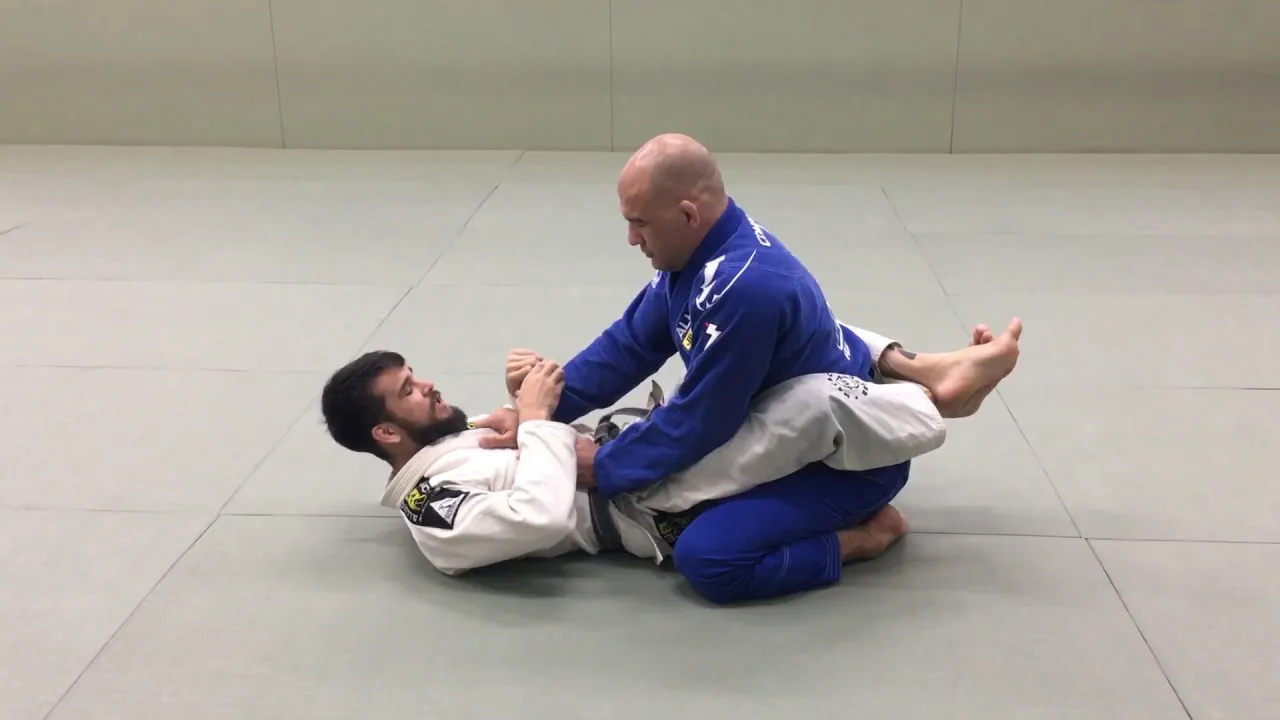 This is the most common beginner position. The person on the bottom has their legs wrapped around the person on top’s waist and locked at the ankles. This position is advantageous for the person on the bottom.
This is the most common beginner position. The person on the bottom has their legs wrapped around the person on top’s waist and locked at the ankles. This position is advantageous for the person on the bottom.
In jiujitsu, guard more or less means “legs”, so closed guard is called such because the bottom person has the legs fully closed around the top person.
Open Guard
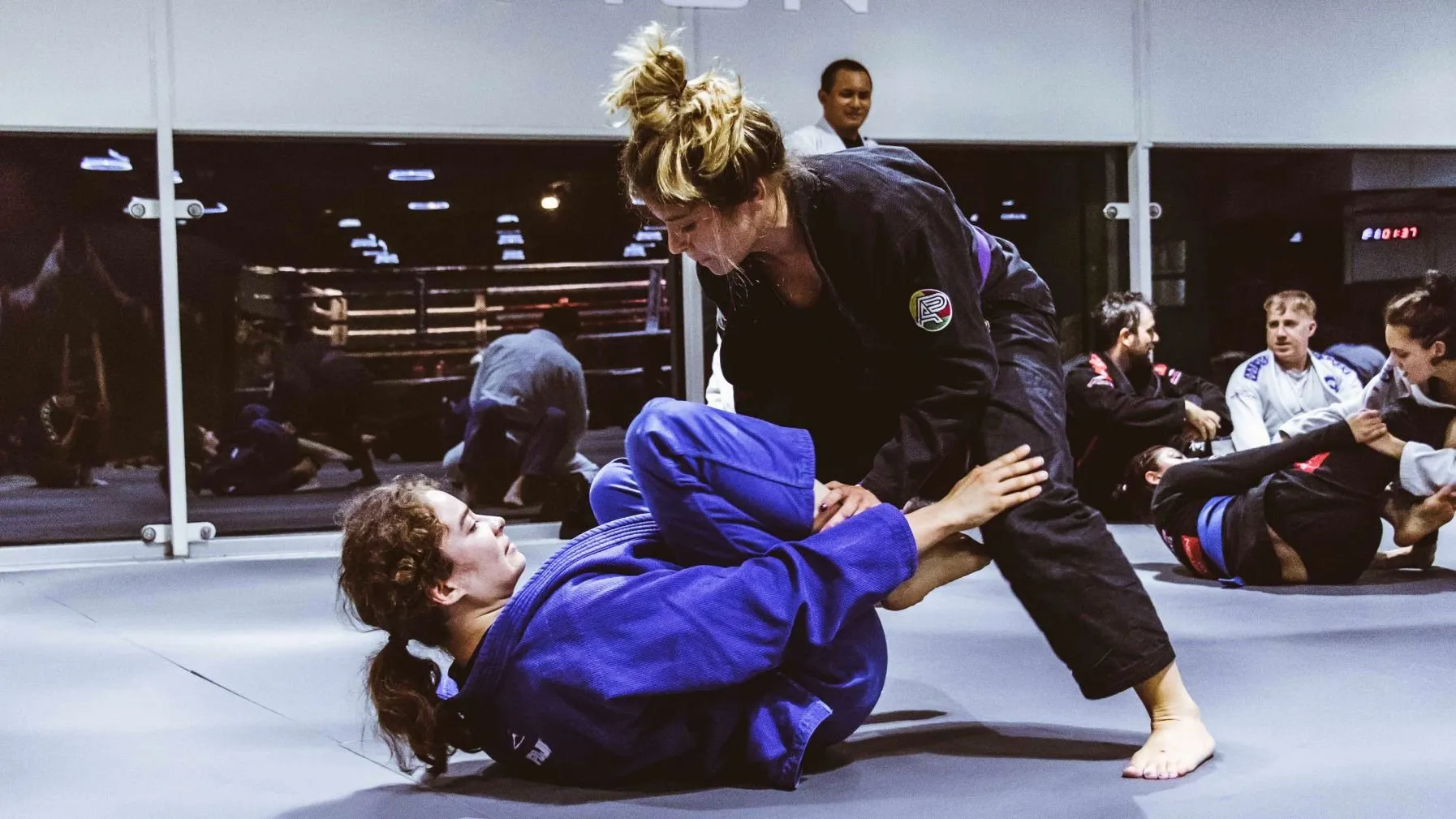
If the top person is able to escape the bottom person’s ankles, then the position is called open guard because the legs have been opened. This highly dynamic position has dozens of subvariations, called guards, such as Spider Guard and Lasso Guard. This position is generally advantageous to neither person.
Side Control
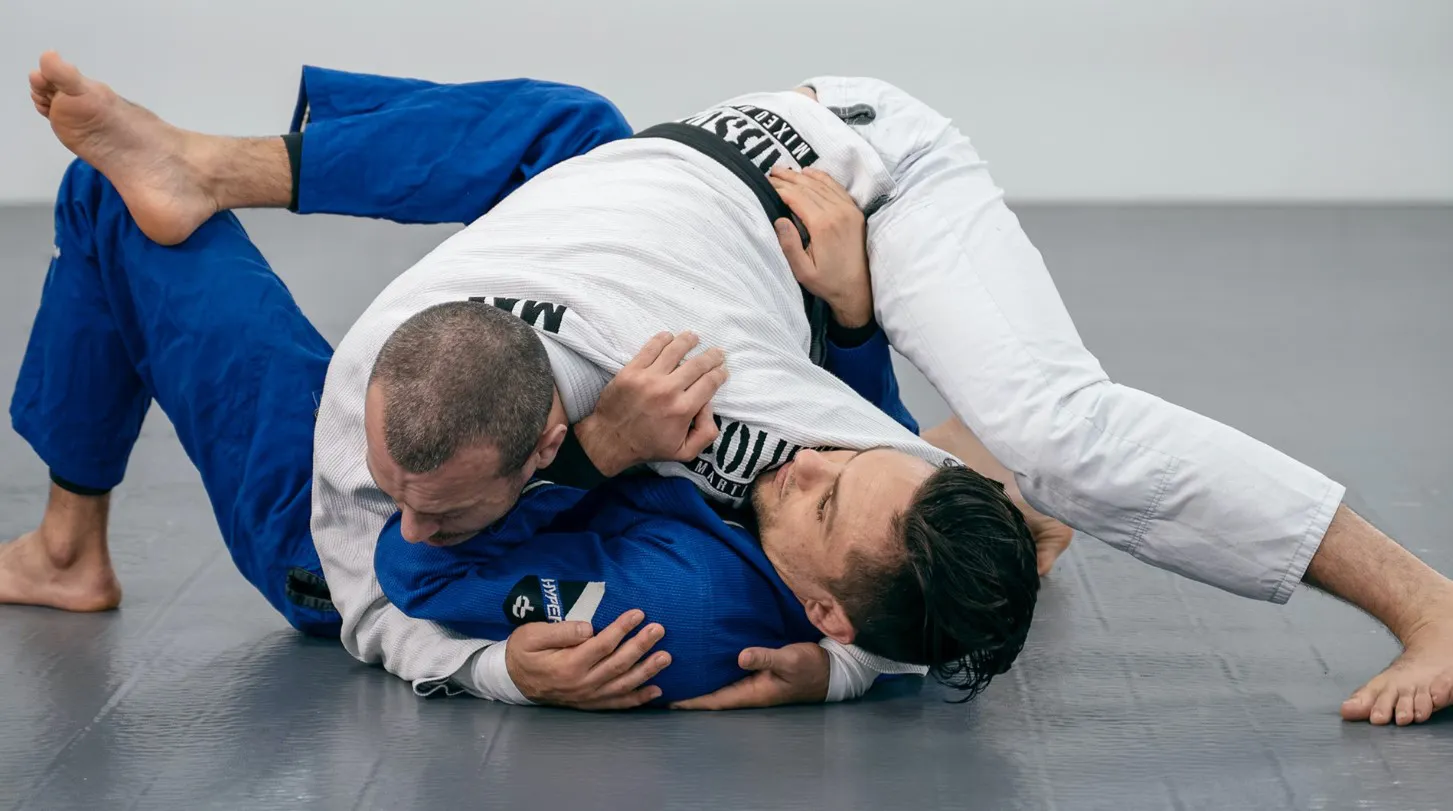
If the top person is able to get around the bottom person’s legs and control their torso, they’re said to have “passed the guard”, and they usually end up in side control. This is advantageous to the top person.
Mount
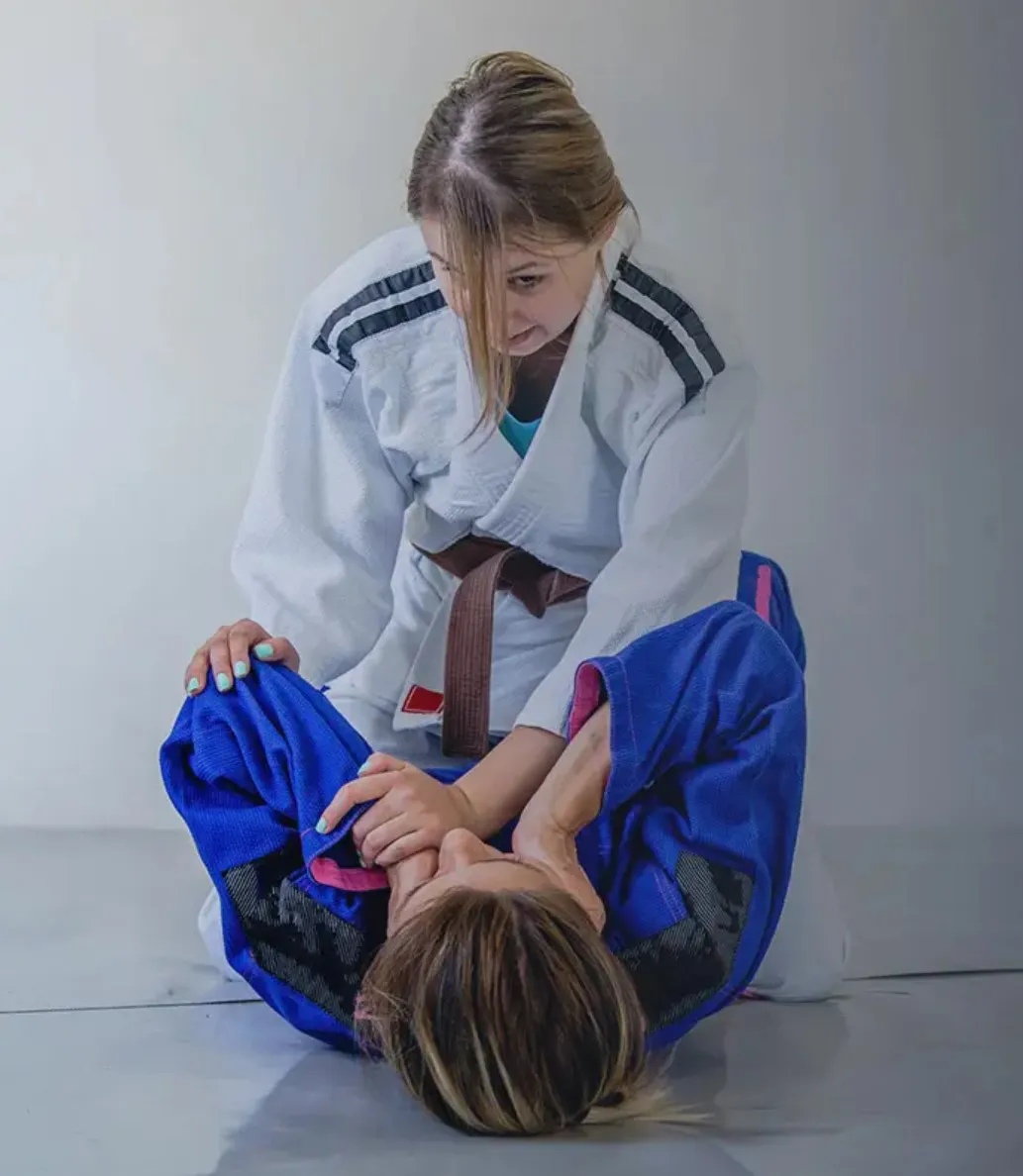
If the top person is able to secure even more control over the bottom person, they can end up sitting on the bottom person’s chest or hips, which is highly advantageous to the top person.
Back
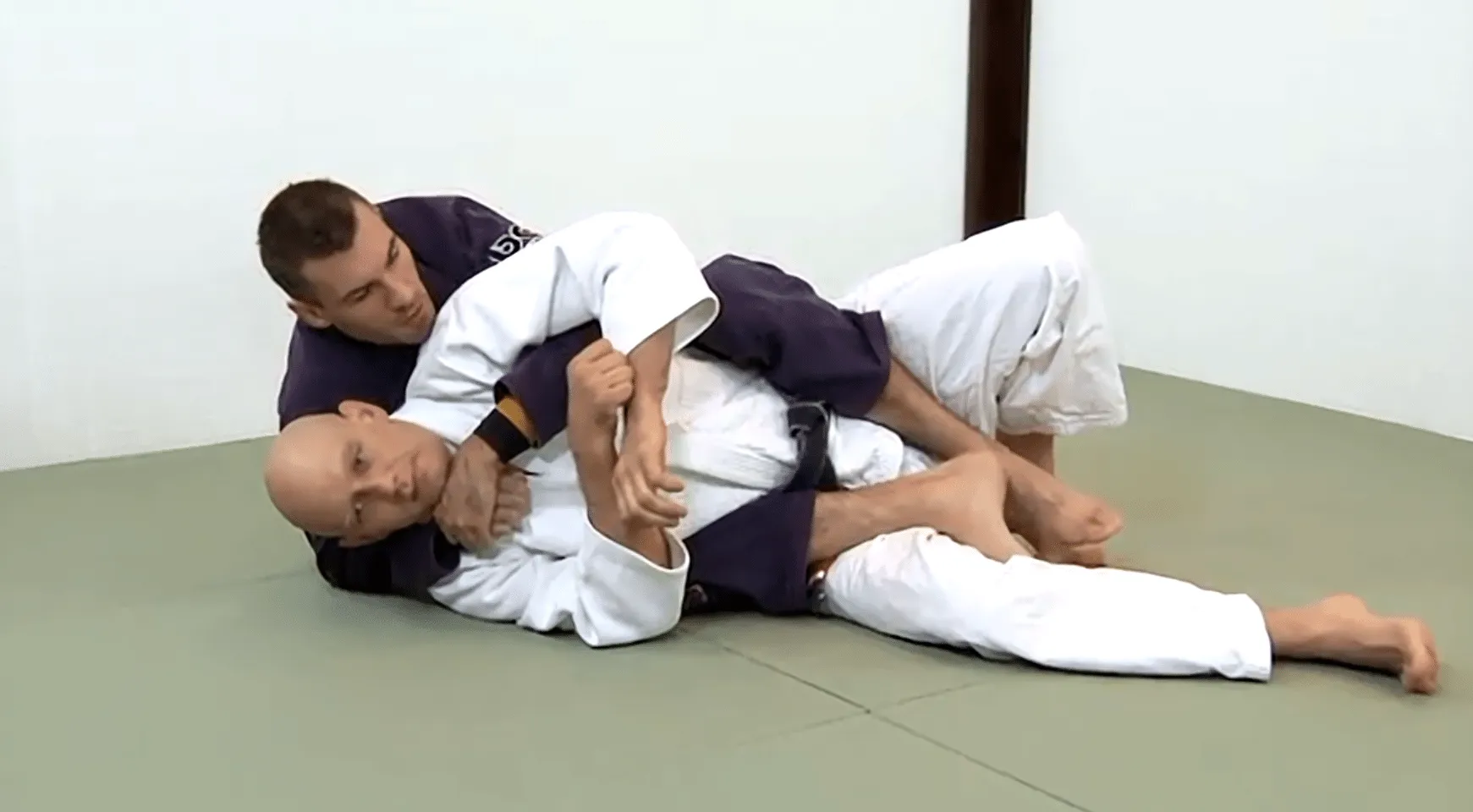
Humans are far better at dealing with threats in front of them than threats behind them. As such, the back is one of the best positions for the person attacking and one of the worst positions for the person defending.
Turtle
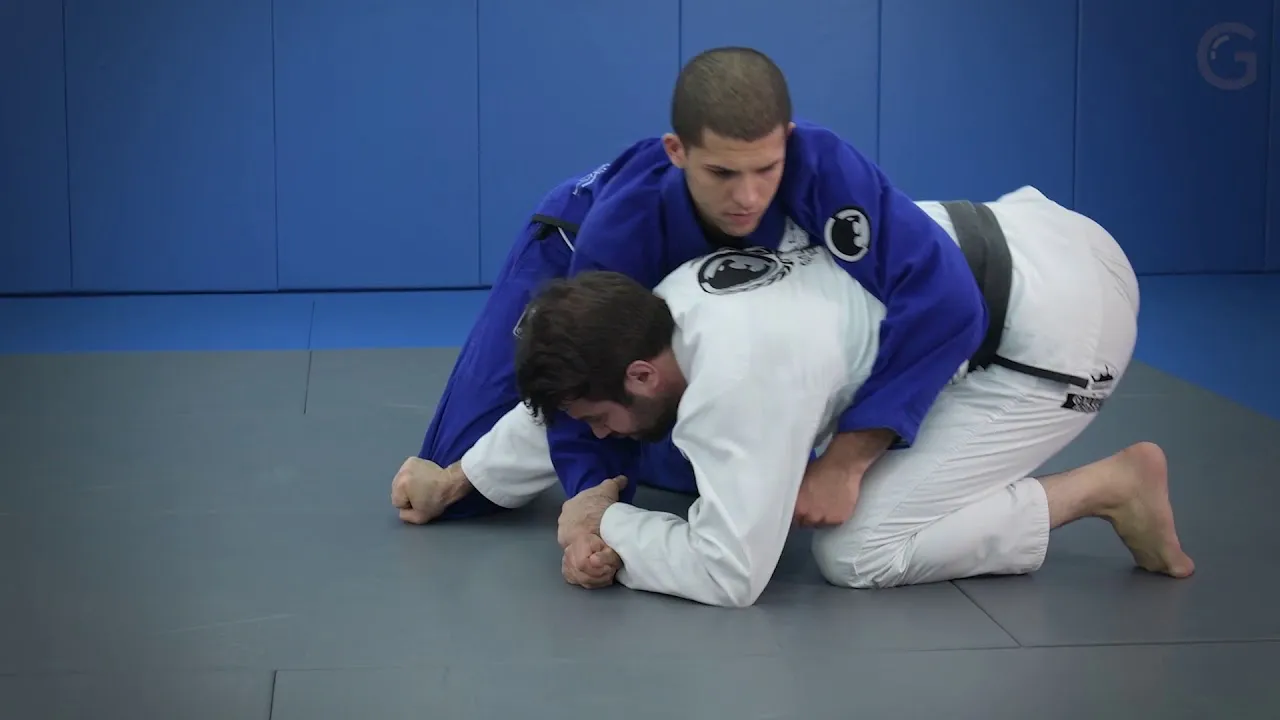
Turtle is a common position that is slightly advantageous for the person on top. It’s called turtle because the bottom person is imitating a turtle’s pose.
Half Guard
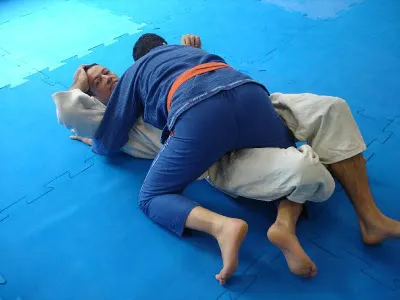
When the bottom person has closed their legs around one of their opponent’s legs rather than both of them, the position is called half guard, as opposed to closing their legs around both the opponent’s legs, which is called closed guard. Who has the advantage depends greatly on the specific subposition of half guard.
How to Get Better
It Is OK to Suck, Especially When Starting
First off, it is OK to be terrible and feel terrible at jiujitsu. You’re delving into an incredibly deep and complex discipline, and so it’s expected that even black belts can sometimes feel like there’s a lot they don’t understand.
If you don’t have any relevant grappling experience, the first twelve months can feel like an endless parade of getting tapped every which way. That’s why you need to measure your progress based on how much you’ve learned and how well you’re defending, rather than by how much you’re winning (because that answer will be very close to zero, especially if you’re small).
This may be a humbling experience. Learn to embrace the humility and appreciate the progress, rather than focusing on the end result. There are no shortcuts, and all you can do is eke out a little progress day after day. Everyone better than you did the same thing, even if you weren’t around to see it.
Executing Is Much Harder in Live Rolls
You may learn a technique or position during class, practice it a few times on your non-resisting partner, and feel pretty confident that you can do it.
Unfortunately, that’s not how it goes in live rolls. When you attempt your newly learned technique on a resisting opponent who knows what you’re trying to do, you may find that you can’t even do the first step of the technique without things going off the rails. Or, you might find that your brain simply goes blank.
This is entirely normal. Learning the basic steps is just the beginning of a long journey to mastery. Be patient with yourself, think about what went wrong, and keep practicing.
How to Efficiently Improve
- Ask your coach questions.
- Identify friendly upper belts and ask them questions, but be respectful of their time.
- Watch instructionals and videos. You can find a wealth of free content on YouTube. However, be mindful of clickbait and “video brain”.
- Clickbait: Thanks to the algorithm, creators are incentivized to have catchy titles like “learn this unstoppable sweep” or “never get submitted again ever”. This is untrue. Try to focus on learning the basics. If it looks fancy, it probably is beyond your skill level, or not very effective without a lot of training.
- “Video brain”: It’s easy to queue up 30 YouTube videos with a jumble of submissions, escapes, and techniques. But your brain is not capable of absorbing all of the details for each technique. If you try to apply them in rolling, you’ll likely freeze up and find your brain buzzing or stumbling as it tries to recall that one submission you watched amongst twenty others. To counteract this, it’s recommended to go deep rather than broad. Watch a bunch of videos on the same technique, or watch the same video over and over and try to really internalize it before moving on.
- Ask open mat partners to do specific training rather than rolling. Rolling will give you experience across the board, but that experience will be dilute. If you practice the same guard or technique with many partners over a short period of time, you’ll see huge improvements far more quickly. Ask your partners to start in that position and reset whenever you leave the position. Of course, ask your partners for areas they want to drill as well.
- After a session, think about what didn’t go well during rolling (e.g. “I failed that side control escape” or “I forgot to posture up”), then choose one or two of those topics to study on your own, possibly with help from videos. During the next session, do specific training on those areas to shore them up until you see improvement, and then rinse and repeat.
Gear
Gi
You can get these online or from the gym, but they’ll be cheaper online. Some gyms require you to buy the gym gi or a patch. Check with your gym before buying.
Check the sizing charts, and ask similarly-sized teammates. Note that sizing often changes between brands. Don’t expect one brand’s A2 to be the same cut as another brand’s A2.
You don’t need a fancy or expensive gi. They’re basically all the same for beginners.
Rashguard (for No Gi)
A rashguard is a tight-fitting, stretchy shirt that helps protect your skin from mat burns, chafing, and infections. It’s essential in No Gi BJJ as it provides a layer of protection and helps keep sweat from soaking into your training partners’ clothes. Rashguards are often made of polyester or spandex, which wicks away moisture and dries quickly.
Choose a rashguard that fits snugly but comfortably. They should cover your entire torso and have no loose or bunching areas. Check the sizing charts for each brand, as sizes can vary. Look for rashguards with reinforced seams and durable materials to ensure longevity.
Underclothes
For Gi, some people like to wear tight elastic/compression shirts under the Gi top, to avoid being bare-chested. You can find these online. You may also find compression pants or sports bras helpful. In general, you can wear anything you want underneath the Gi top for comfort, but be mindful that it may be grabbed or pulled, and it can get hot.
In competition, men are not allowed to wear anything under the Gi top, and women must wear a compression shirt, gymnast top, or one-piece swimsuit.
Mouthguard
Even though jiujitsu is not a striking sport, it’s still possible for people to accidentally hit you in the face, or for people to choke you through your jaw. In these scenarios, wearing a mouthguard can prevent serious tooth, tongue, and lip damage. This damage can be extremely painful and expensive to repair.
You can find a cheap mouthguard online, which you mold to your mouth by boiling it and biting into it. If you want to invest more, you can get custom molded mouthguards either online or by talking to your dentist. A custom molded one will fit more comfortably and may make it easier to breathe and talk with the mouthguard in.
Cup
Some people wear cups to protect their crotch, but this is generally not necessary. Hard cups can actually be a danger to your opponent. Cups are also banned in most tournaments.
Headgear
The goal of headgear is to protect your ears from damage, which could lead to cauliflower ear. Wearing headgear is banned in most tournaments and is fairly uncommon. One recommendation is to consider wearing headgear only when your ears are feeling bruised or achy, to avoid further damage while they heal.